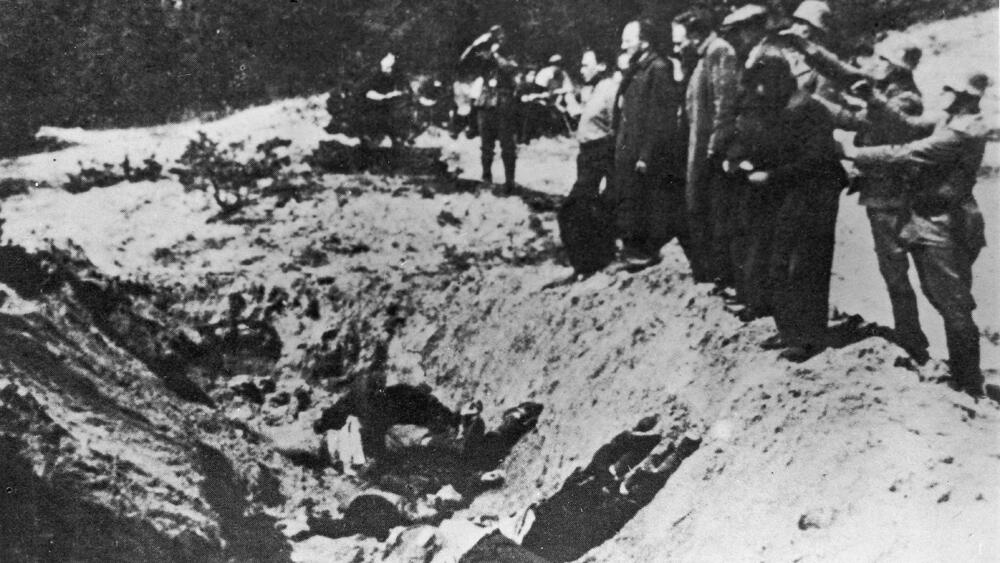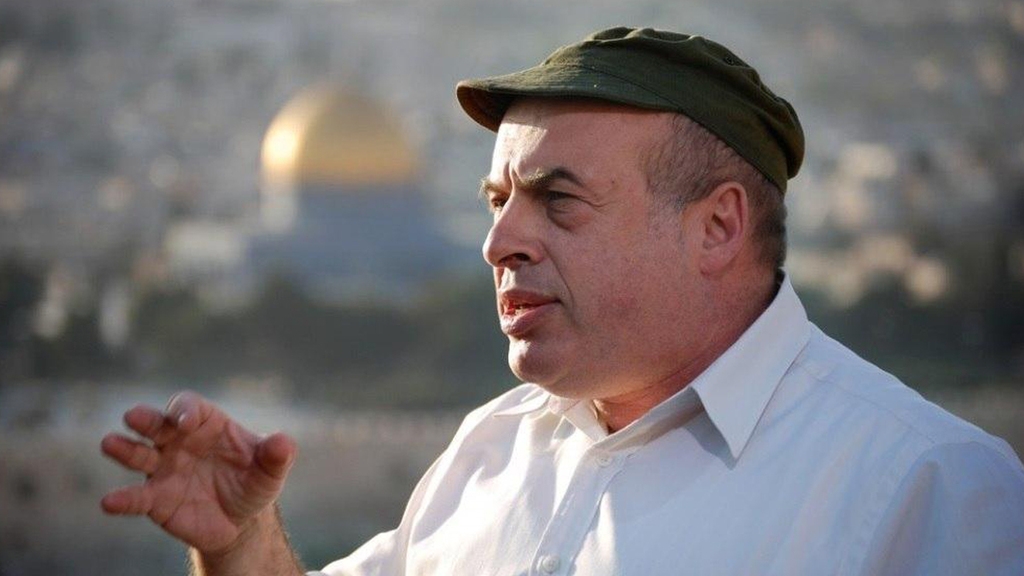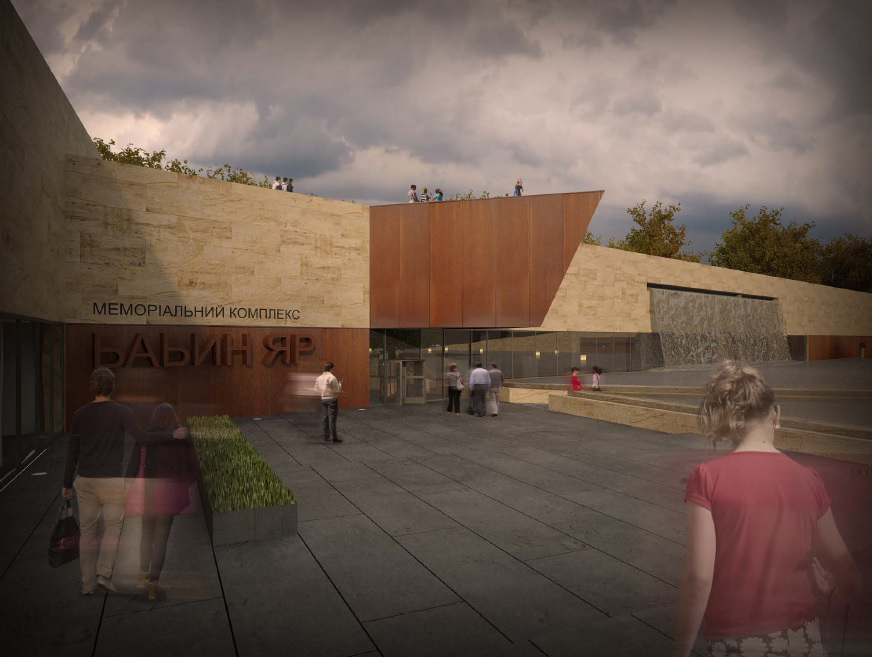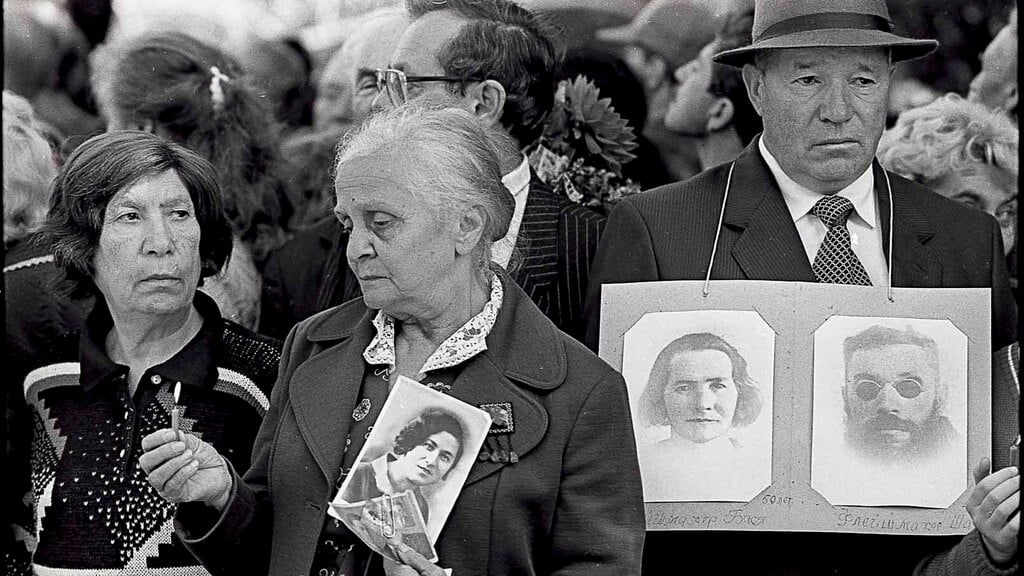On September 29, 1941 the Jewish residents of Ukrainian capital Kiev were told to assemble in the town square.
The Nazis who had conquered the city were outraged by a number of explosions that had occurred.
7 View gallery
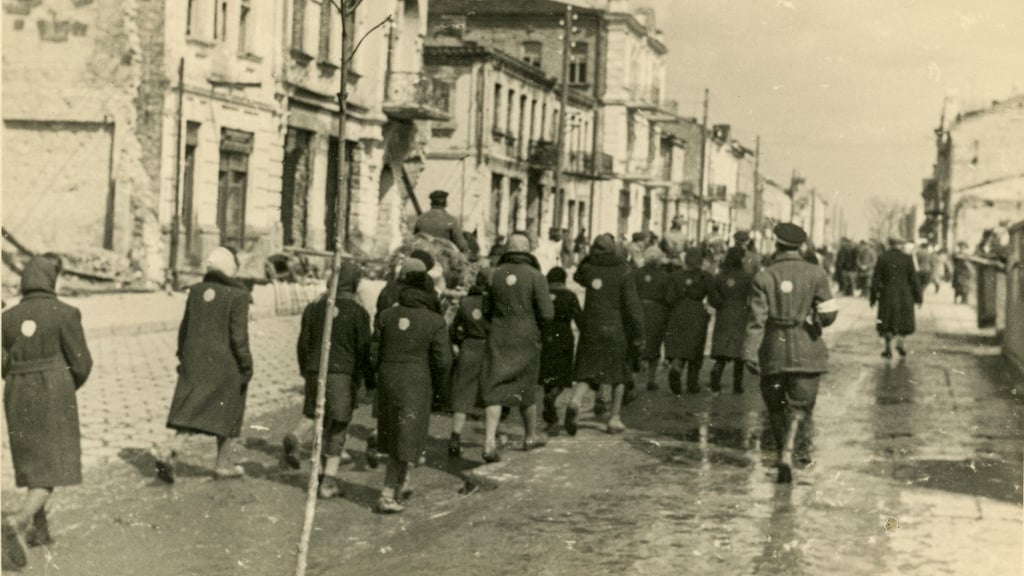

Jews being deported to labour camps during the Holocaust
(Photo: The Babyn Yar Holocaust Memorial Center)
Tens of thousand of Jews who arrived at the square were marched towards the Jewish cemetery and in the direction of Babyn Yar, a ravine on the outskirts of Kiev, where they were told to discard their personal belongings.
Shots were heard as people were told to advance. Anyone trying to turn back was stopped. Between September 29 and 30 1941, a total of 33,771 Jews were shot dead and thrown into a mass grave dug in advance of the massacre.
This was probably the largest extermination of Jews carried out in such a short period of time. Another 15,000 were murdered in the same way in the ensuring year, along with people who were ill, Gypsies, prisoners of war and anyone who was captured resisting the Nazis.
Babyn Yar symbolizes the massacre of 1.5 million Jews in Eastern Europe during the Holocaust.
The ravine of Babyn Yar still exists outside Kiev. In recent years, efforts have been underway to establish a unique museum and educational center on the site, to commemorate the memory of the victims. Construction is expected to be completed by 2026.
The Ukraine-born Natan Sharansky, a former prisoner of Zion, Author, politician, chair of the Jewish Agency and the recipient of the Israel Prize, has been involved in the project since 2016.
The commemoration center will be built with funds donated by philanthropists with roots in the Ukraine and with the help of the Kiev municipality and the support of Ukrainian President Volodymyr Zelenskiy, who described the initiative as important for his country.
The cost of the project is estimated at $100 million.
The center is expected to be the most prominent commemoration of East European Jews murdered during the Second World War, equal in importance to large museums such as the Yad Vashem Holocaust Remembrance Center in Jerusalem and the Holocaust Museum in Washington D.C.
7 View gallery
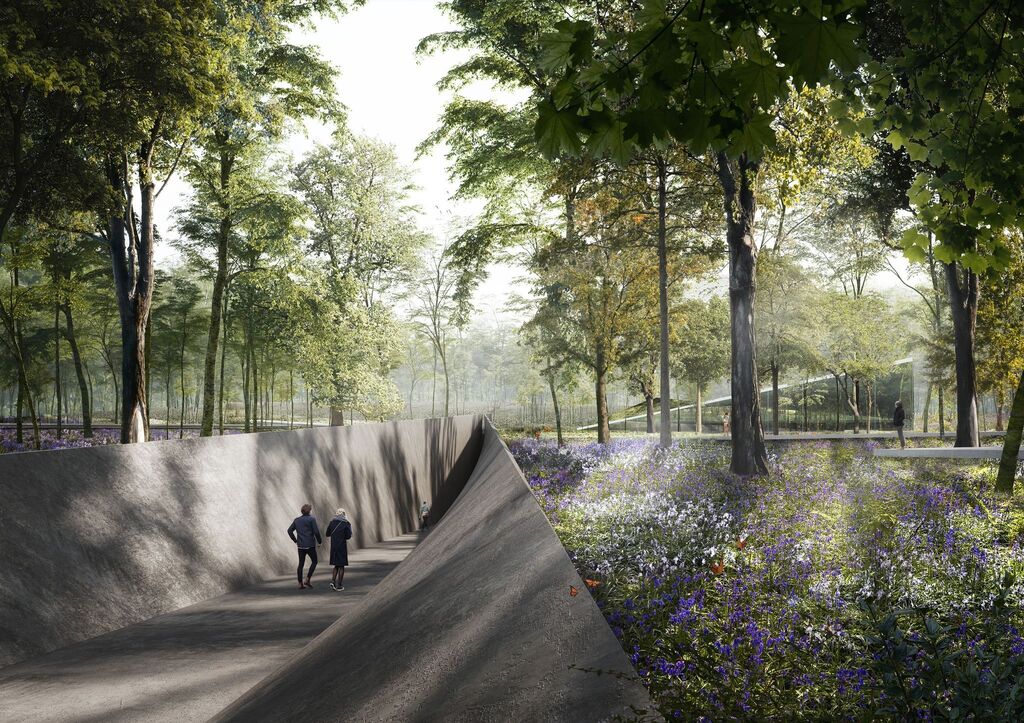

A mock-up of the entrance to the new museum
(The Babyn Yar Holocaust Memorial Center)
There are already new testimonials collected and technologically advanced educational plans written specifically for the younger generation.
"Babyn Yar is for me a symbol of the Holocaust," Sharansky said. "It had not begun with extermination camps. The Nazis and their helpers shot Jews to death in every town they conquered. Babyn Yar was the largest massacre. Nearly 34,000 Jews were murdered there and 1.5 million were killed in the same manner elsewhere."
"I was raised in Stalino, known today as Donetsk in the Ukraine," Sharansky said.
"Seventy-five thousand people were murdered and dumped into mass graves but that history was all but erased from memory with only the Red Army's victory over Germany being commemorated, until the fall of communism. There was no mention of the Holocaust of the Jews.
"A memorial was built at the site of the mass murder in the 1970s, but it had no mention of the murder of Jews and eventually became a waste dumping ground. There was even a plan to build a stadium there but until now there was nothing but a swamp," Sharansky said.
"In 1975, I was arrested on my way to Babyn Yar for a memorial commemorating the massacre. Authorities wanted no mention of the extermination of Jews. When in 1991 Ukraine became an independent state, the denial of history ended," he said.
"There was no longer a desire to hide the past. Up until that time there were no outward signs of Jewish life, except of course in acts of anti-Semitism," he said.
With the fall of the Soviet Union and the establishment of an independent Ukrainian state, Jews living there were allowed to immigrate to Israel, Synagogues were opened, and several memorials built.
"But for various reasons there was no real effort to do more," Sharansky said.
"The mayor of Kiev approached me during his visit to Israel and raised the idea to build a museum and a center for historic research of the Holocaust. He was accompanied by two Jewish philanthropists, local benefactor Victor Pinchuk and Mikhail Fridman who established the Genesis Philanthropy Group for Jewish identity around the world, both Jews," said Sharansky.
"I was invited to join their initiative, which gave me a meaningful feeling of closure," he said.
The Babyn Yar project now enjoys the backing of many world leaders and public figures such as former German foreign minister Joschka Fischer and World Jewish Congress chair Ron Lauder, as well as numerous Jews who all hailed from the Ukraine and had family among the victims in Babi Yar and elsewhere.
"Our goal is to tell the events of Babyn Yar," the museum's artistic director Ilya Khrzhanovsky said. "We will stick to the historic facts and narrative that were silenced for decades. We have been working with historians around the world towards that end and our website is accessible to all."
7 View gallery
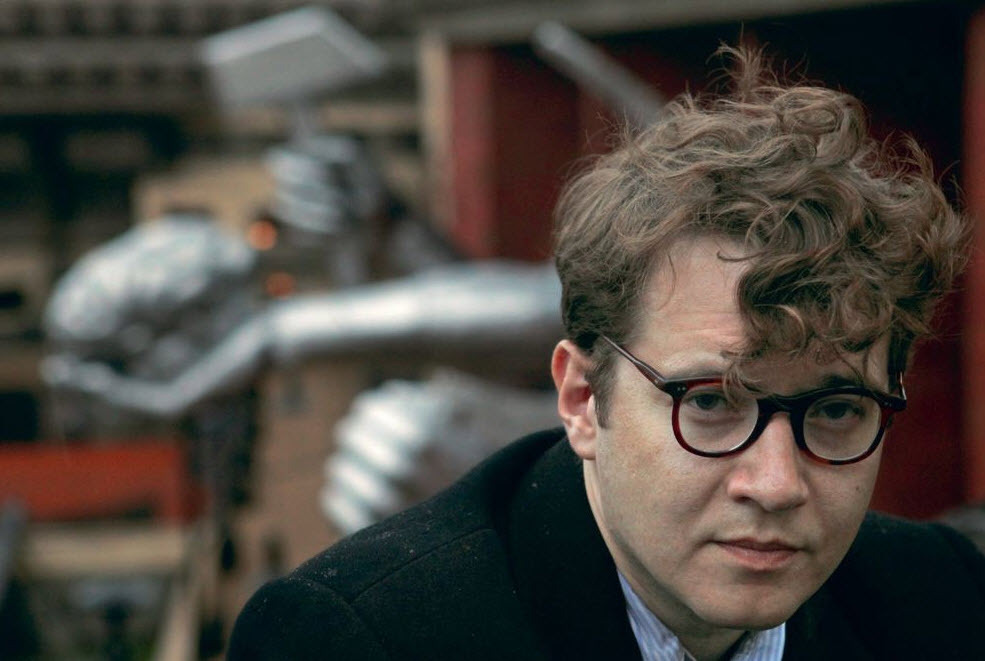

Ilya Khrzhanovsky, the artistic director at the Babyn Yar Holocaust Memorial Center
(Photo: Sandra Weller)
"It is our duty to tell the historic truth as recorded by historians but the facts, such as testimonies, documents and photos are just one way by which we can tell the story," Khrzhanovsky said.
"We would like visitors to experience an emotional journey as they pass through our museum, and that will allow the impact of the lessons of history to be understood."


